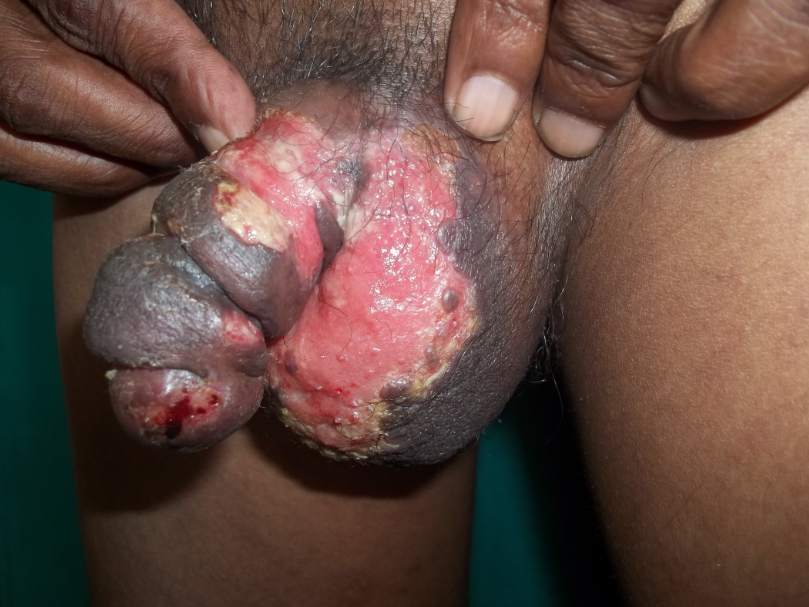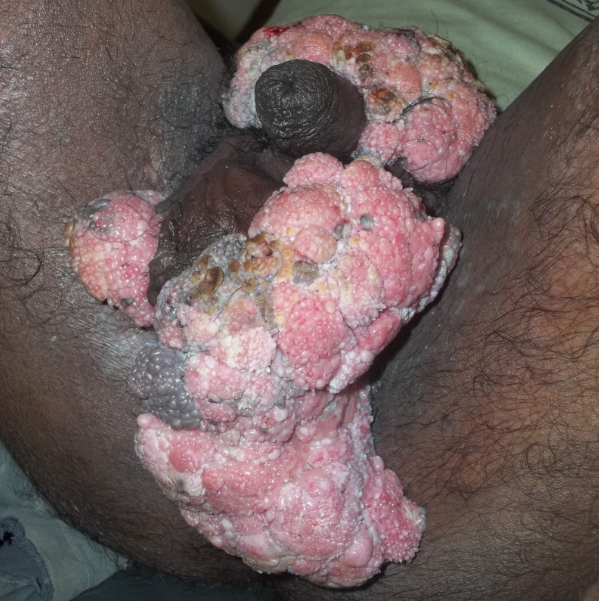Introduction
The objective of the present study is to find out association of HIV infection with various sexually transmitted infections and correlate with their CD4 T cell counts.
STDs have remained a health issue since many centuries; they became a major health problem worldwide by the appearance of HIV around 1980. The relationship between sexually transmitted infections and HIV is complex. They facilitate transmission of HIV by increasing the infectiousness and susceptibility of the partner.1, 2 In turn; HIV infection alters the natural history, manifestations and treatment of sexually transmitted infections.
Material and Methods
The present study was cross-sectional study carried out in the Out Patient Department of dermatology, venereology and leprology in tertiary care hospital. A total of one hundred and fifty-five cases of HIV seropositivity were studied over a period of twelve months i.e. February 2013 to January 2014. A detailed history of each case was taken. An attempt was made to know the possible mode of transmission of HIV infection in each patient and/or a history of any risk factor(s) in the spouse. A thorough clinical examination, which included the general examination followed by a detailed dermatological evaluation with emphasis on sexually transmitted infections, was done and findings were recorded. The clinical diagnosis of genital lesions was supplemented with relevant laboratory investigations such as gram staining ,10% KOH mount under the microscope, tzanck smear, venereal disease research laboratory test (VDRL), skin biopsy in selected cases. Patients were treated according to diagnosis made. Specific treatment was given for sexually transmitted infections. Cases were asked to come for follow-up every week initially, and monthly after clinical cure.
Data analysis was done using Statistical Package for Social Sciences (SPSS) v.21 for windows. For comparison of frequencies and percentages Pearson Chi-square test was used. For comparison of more than two groups Krushal Wallis test was used. P value <0.05 was considered statistically significant.
Results
One hundred and fifty-five cases were observed over a period of one year. Twenty-five cases (16.12%) had sexually transmitted infections (n = 25, one patient had both herpes progenitalis and genital warts). Out of these nineteen (76%) were males, five (20%) were females and one (4%) transgender. Maximum cases (48%) were in the age group of 31-40 years. A total of sixteen (64%) patients were married, six (24%) unmarried, two (8%) were separated and one (4%) widowed. Most common route of transmission was found to be heterosexual (76%) [Table 1] and most common infection was herpes progenitalis (64%) [Figure. 1] with a mean CD4 T cell count of 289.81 cells/cumm, [Table-2]
Table 1
Distribution of study population according to Route of Transmission of HIV infection.
| Route | N (25) | Percentage |
| Heterosexual | 19 | 76% |
| Homosexual | 2 | 8% |
| Bisexual | 1 | 4% |
| Blood transfusion | 3 | 12% |
Table 2
Sexually Transmitted Diseases (STDs) and their CD4 counts in the study subjects.
Discussion
In the present study, males comprised of 76% whereas females comprised of 20% of the patients with 4% being transgender. This was similar to a study done by Agrawal et al.3 which had 72.1% males and 27.9% females. The highest incidence of HIV positive patients is in the age group of 21-40 years (65.16%) which highlights the fact that it is most common in sexually active age group which makes them most vulnerable similar results were reported in other studies.4, 5, 6, 7, 8, 9 Maximum patients were from a rural background and mainly were illiterate. This causes lack of awareness about the safe sexual practices, making them more prone to develop sexually transmitted infections and HIV. 64% patients were married which signifies the polygamous relationship in these patients making them more vulnerable. Heterosexual (76%) was the most common mode of transmission which was similar to that seen in Kamat et al. 10 study (67.7%).
The most common type of Sexually Transmitted infection in the present study was Herpes progenitalis with a mean CD4 T cell count of 289.81 cells/cumm which was almost similar to 239.00 cells/cumm in a study done by Vasudevan et. al. and higher than 198 cells/cumm in Bosamiya et al. study and 187 cells/cumm in Shobhana et al. study,11, 12 similar results were reported in other studies. 13, 14, 15, 16 It was the most common STD found in all the related studies except Nair et. al. 7 study where syphilis was the commonest STD. One case of Syphilis was seen in the present study with CD4 T cell count of 795 cells/cumm which was much higher than the CD4 T cell count seen in Vasudevan et al. (157 cells/cumm) and Shobhana et. al. (54 cells/cumm). 11, 12 One case of Gonorrhea was also seen with CD4 T cell count of 719 cells/cumm. Both these infections accounted for 4% of the total cases in the present study which was higher than 2.47% gonorrhea cases in Nair et al. and 2% syphilis cases in Shobhana et al. 6, 7 Genital warts were also seen in the present study with the mean CD4 T cell count of 295.25 cells/cumm which was much higher than 152 cells/cumm in study of Shobhana et. al and Bosamiya et al. 12, 17 Percentage of Genital warts in the present study (16%) was much higher than that seen in Nair et. al. (6.16%) and Shobhana et. al. (5%). 12, 18 Special mention about one case of buschke-lowenstein tumour needs to be done with the CD4 T cell count of 351 cells/cumm [figure2]. A wide surgical excision of the tumour was done and 80% of the tumour was removed. The rest 20% was treated with 20% topical podophyllin. 4% cases of Genital molluscum were seen in the present study which was higher than 0.5% seen in Shobhana et. Al and martin et al 12, 19 The mean CD4 T cell count was 591.00 cells/cumm. 8% of Balanoposthitis was also present in the present study which was quite higher than 2% seen in Shobhana et. Al who reported mean CD4 T cell count of 372.50 cells/cumm. 12 Similar result was reported in other studies. 20, 21, 22
Conclusion
HIV-related sexually transmitted infections are quite common and present according to the degree of immunosuppression. They can be easily detected if studied properly and can also serve as diagnostic and prognostic markers. The present study also highlights the need for modest interventions - moral and health education to prevent HIV infection and sexually transmitted infections in younger age group.


